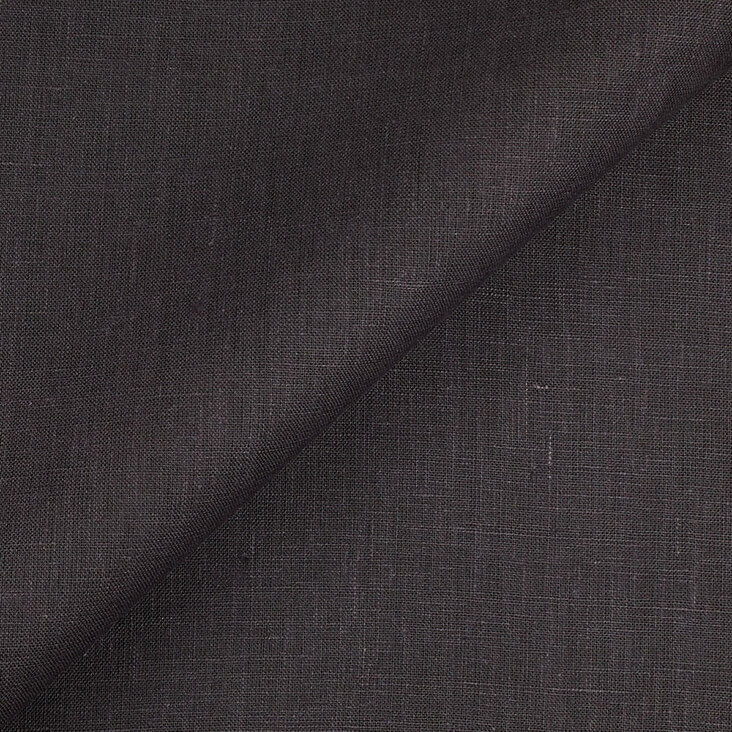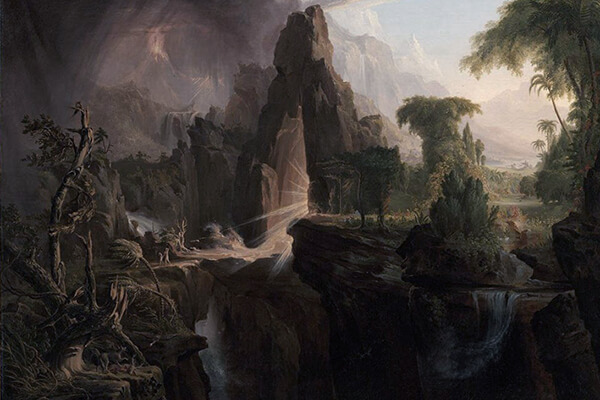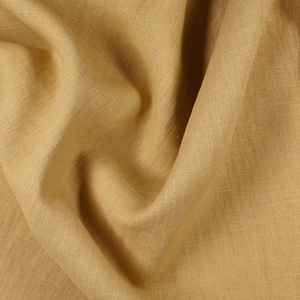FS Colour Series: Nine Iron inspired by Thomas Cole’s Wild America
NINE IRON linen’s steely, dramatic grey with just a hint of crimson became great swathes of deep shadow in the hands of the painter Thomas Cole, sweeping across America’s epic mountain ranges and forming wild, turbulent skies laden with thunderstorms. His momentous landscapes are a celebration of America’s sublime wilderness during the mid-19th century, before industrialisation took over, invoking the unstoppable force of this overwhelmingly vast terrain. Announcing his great love for the American landscape he wrote, “The painter of American scenery has, indeed, privileges superior to any other. All nature here is new to art.”
One of eight children, Cole was born in Bolton-le-Moors in England in 1801, but his father was a wool manufacturer who moved regularly in search of work. The young Cole adapted to this nomadic lifestyle from an early age, attending various art classes in different locations and picking up new skills along the way including printmaking and engraving for fabric design. He also developed a great sensitivity to the English landscape, enjoying long walks in the most unspoilt places.
Cole’s family relocated to North America when he was 17 years old and it was here that Cole’s artistic career began. While his family headed for Ohio, the adventurous young Cole chose instead to settle in Philadelphia, where he took on work as a textile designer and wood engraver, famously producing a series of illustrations for Paul Bunyan’s Holy War, 1682. Cole attended art classes at the Pennsylvania Academy of the Fine Arts before moving to New York to pursue art full time.
An adventurer at heart, Cole made a lifechanging visit in 1825 along the Hudson river to the eastern Catskill Mountains, making free, rapid sketches of gnarling trees, angry skies and gushing water along the way. He found such a deep connection with the land here that its spirit of place would stay with him for life. The paintings he made captured this rugged side of America with such fearsome force that his work would come to influence an entire generation of painters, who became known as The Hudson River School.
In 1827 Cole made his first visit to New Hampshire’s White Mountains, where he found a mystical and unspoilt land filled with wondrous pockets of light and shadow; studies made on location would inform some of his most famous works of art. In View in the White Mountains, 1827, we are dipped deep down into an inky valley, where a pool of golden light is surrounded by dense forests in dark grey, muffling shadow.
Along with his depictions of real places, Cole also aspired towards a “higher style of landscape,” one which heightened the romantic drama of the place, as well as combining narrative elements, sometimes lifted from literary or biblical subjects. Expulsion from the Garden of Eden, 1828 is one such work, which combines astute observations of wild America with the threatening drama of the famous biblical scene. Fantastical trees arch over the sky, just hinting at the devastating beauty of paradise, while our eyes are drawn to the barren terrain beyond, where angry grey shadows tinged with red streak across the threatening sky.
Cole took a tour across Europe from 1829 to 1832, where he made copious studies on location, but he was still drawn to dark, brooding skies, as demonstrated in the oil sketch Stormy Landscape, 1832. Here grey, thunderous light fills the scene with electrifying drama, only broken apart by a meandering sliver of glossy water that snakes into the distance.
In his later paintings Cole focussed increasingly on allegorical subjects that contemplated the meaning of life. He was increasingly religious, seeing the spirit of God within the power of nature. In the series The Voyage of Life, 1842 tiny figures are set amidst vast, overwhelming landscapes, a potent metaphor for our insignificance in the face of both nature and God; from the series, Manhood, 1842 sees a young man cascading over rocky terrain with hands clasped in prayer, while above him a glowering sky in shades of dark grey and pink weaves in and out of the light, brimming with heightened wonder and anticipation.















































One Comment
Adriaan Finnerman
This is a gorgeous fabric and a wonderful concept. I live in the Hudson Valley and appreciate the feeling that comes out of the Hudson River School.